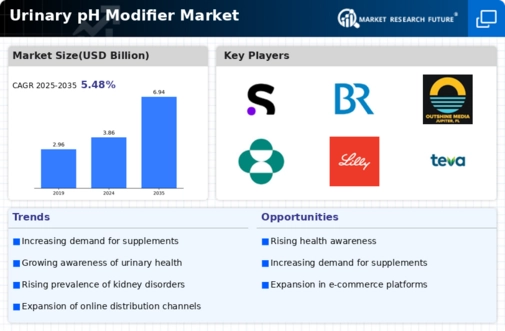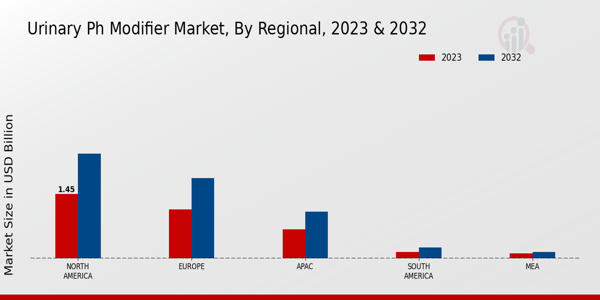The Urinary pH Modifier Market exhibits a dynamic competitive landscape characterized by various key players striving for market share through innovative product offerings and strategic initiatives. Companies in this sector focus on developing effective solutions to regulate urinary pH levels, addressing both therapeutic and preventive needs.
As consumer awareness increases and the prevalence of urinary disorders escalates, the demand for urinary pH modifiers continues to grow, leading companies to invest in research and development, strategic partnerships, and enhancing distribution networks. Market players leverage their expertise in pharmaceuticals to target diverse customer segments.
These include healthcare professionals and consumers, using both traditional and digital marketing strategies to promote their products. Sanofi stands out in the Urinary pH Modifier Market, recognized for its robust portfolio of pharmaceutical products that cater to various health conditions, including urinary disorders.
The company leverages its strong research and development capabilities to innovate and improve urinary pH modifier formulations, thus ensuring efficacy and safety. With a presence, Sanofi is positioned to reach diverse markets, efficiently distributing its products through established channels.
The brand is well-known for its commitment to quality, compliance with regulatory standards, and ability to adapt to changing market demands, ensuring strong consumer trust. Through targeted marketing strategies and collaborations with healthcare professionals, Sanofi enhances its visibility and fosters consumer education about the benefits of urinary pH modifiers.
Bayer holds a significant position in the Urinary pH Modifier Market, equipped with a wide-ranging portfolio that addresses various health needs, including those related to urinary health. The company's commitment to innovation places it at the forefront of developing effective urinary pH modifier solutions that are well-received by healthcare providers and patients alike.
Bayer's strong emphasis on sustainability and corporate responsibility also resonates well with modern consumers, promoting loyalty and brand recognition. By utilizing advanced marketing strategies and maintaining robust relationships with distributors and healthcare partners, Bayer effectively penetrates different markets.
This ensures that its urinary pH modifiers are accessible to a broad consumer base. Continuous investment in research underscores Bayer's dedication to enhancing its product line and adapting to evolving consumer and market dynamics.



























Leave a Comment